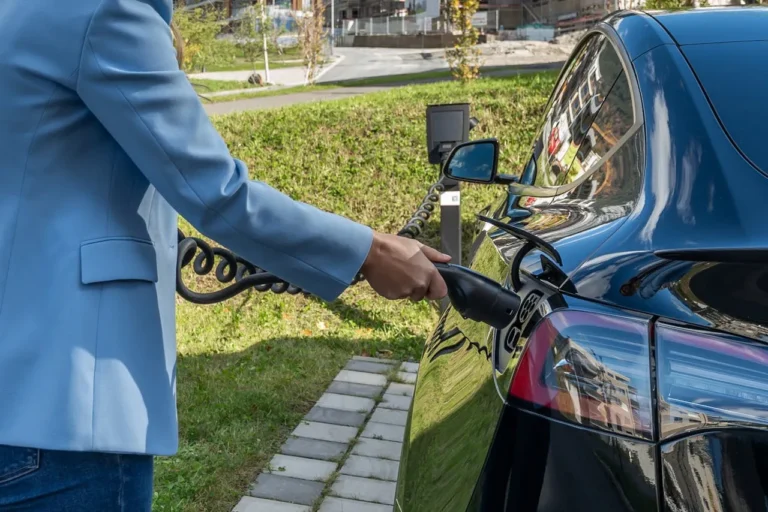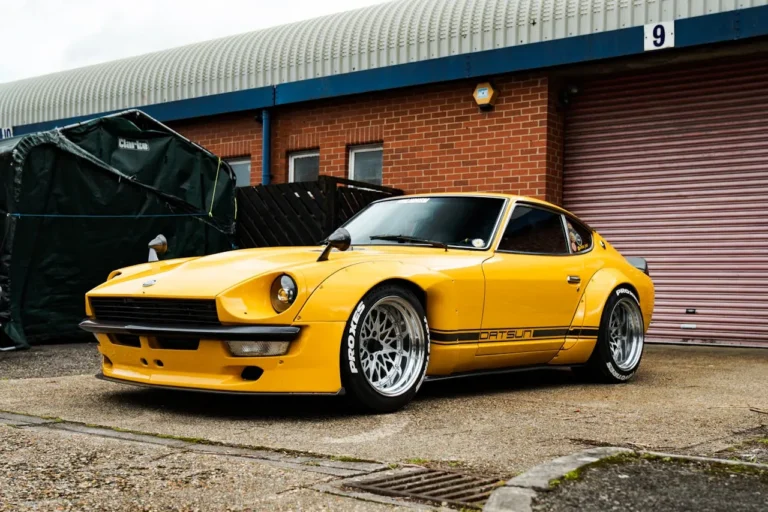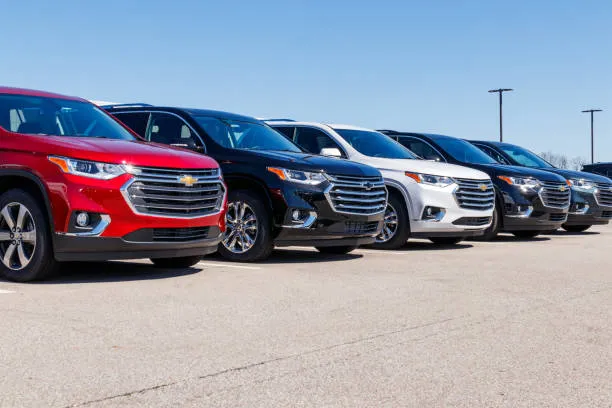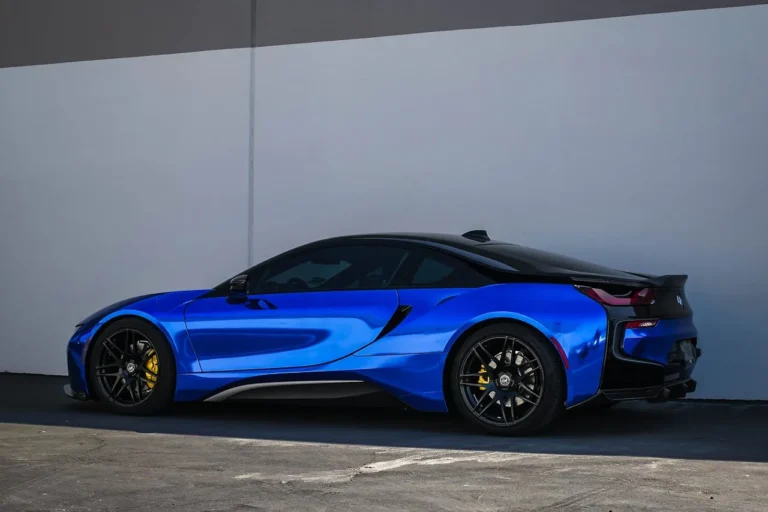
Barrett‑Jackson’s legendary gavel is heading to the Midwest—and with it comes far more than a three‑day sale.
When Craig Barrett-Jackson confirmed that The World’s Greatest Collector Car Auctions will fill the Ohio Expo Center & State Fairgrounds in Columbus from June 25‑27, 2026, he wasn’t merely announcing another stop on the company’s calendar; he was planting a flag in a region that sits within a day’s drive of nearly half the U.S. population. It will be Barrett‑Jackson’s first full‑scale automotive‑lifestyle event in America’s heartland, completing a geographic arc that already touches the South (Palm Beach and New Orleans), the West (Scottsdale and Las Vegas), and the mountain states in between
A powerhouse brand meets a powerhouse venue
Founded in 1971 by Arizona enthusiasts Tom Barrett and Russ Jackson, Barrett‑Jackson has grown from a Scottsdale charity auction into an entertainment juggernaut that regularly sets television ratings records, draws Hollywood A‑listers, and moves hundreds of millions of dollars’ worth of iron, fiberglass, and carbon fiber every year. Over five decades the company has cultivated a reputation for carnival‑like spectacle—thrilling live bids, high‑octane ride‑along experiences, vendor villages, live concerts, and seven‑figure charity sales that have helped the firm raise more than $156 million for nonprofits to date.
For Columbus, the decision to welcome such a brand could hardly be timelier. The Ohio Expo Center’s $460‑million “Expo 2050 Master Plan” will be complete just months before the auctioneer’s trailers roll in. The project adds two purpose‑built exhibition halls, renovates four historic structures, and completely modernizes underground utilities, Wi‑Fi, and way‑finding. All told, the campus now boasts 1.4 million ft² of indoor event space and parking for 14,000 vehicles—capacity that comfortably eclipses Barrett‑Jackson’s requirements for display tents, staging lanes, and bidder paddocks.
Why Columbus—and why now?
Ask Craig Jackson and he’ll point first to logistics. John Glenn Columbus International Airport lies 10 minutes away, and Interstate arteries radiate from the city in every cardinal direction. But there is also a cultural fit: Central Ohio’s proximity to Detroit, Toledo, and Indiana anchors it in one of the country’s most resilient automotive manufacturing corridors. Vintage‑car rallies, custom hot‑rod cruises, and concours d’elegance already dot the regional calendar; now collectors who once drove 700 miles to Scottsdale or Las Vegas can shop a blue‑chip docket in their own backyard.
“We’ve anticipated the Expo Center’s renovation for years,” Jackson said when the deal was announced. “Columbus gives our bidders easy access, upscale hotels, and a sports‑mad downtown that understands large crowds—just look at Buckeyes football Saturdays.” His counterpart, company president Steve Davis, echoed the sentiment: “Art, food, sport, technology—Columbus checks every lifestyle box our guests expect.” Fairgrounds executive director Adam Heffron, meanwhile, framed the auction as a capstone for the state’s ongoing investment in its signature venue.
An economic engine on four wheels
If precedent holds, the numbers will be staggering. An independent 2025 study projected that Barrett‑Jackson’s week‑long Scottsdale extravaganza injected roughly $400 million into the Arizona economy, generating $6 million in state sales tax, $2 million in additional city tax revenue, and supporting more than 1,400 jobs across hospitality, construction, and transportation. Translating that impact to Central Ohio—even factoring in a slightly shorter event window—suggests tens of millions of dollars in hotel bookings, restaurant receipts, rideshare fares, and retail sales. For local hot‑rodding shops, detailing studios, and transport haulers, the three‑day sale will be a midsummer Christmas.
Tourism boosters are already planning tie‑ins: food‑truck corrals featuring regional barbecue and craft beer; behind‑the‑scenes tours at the nearby Honda Heritage Center in Marysville; and road rallies that trace Ohio’s original National Road, U.S. 40. Expect Buckeye‑branded memorabilia, too. If NASCAR legend Dale Earnhardt Jr. can consign the Chevrolet Nova he drove as a teenager, don’t be surprised to see an urban‑camouflage Camaro wearing scarlet paint and gray stripes.
What bidders can look forward to
While the final docket won’t be locked until spring 2026, Barrett‑Jackson’s wish list already includes:
- Blue‑chip classics from the ’50s and ’60s—think fuel‑injected Corvettes, tri‑five Bel Airs, and Chrysler letter cars.
- Factory‑fresh supercars such as the 2025 Aston Martin Valour and Ferrari SF90 XX, many offered at no‑reserve.
- Restomod muscle built by Midwest tuning houses—Cleveland’s own Ringbrothers hinted on social media that a carbon‑fiber 1970 Dodge Charger nicknamed “Buckeye” may debut under the lights.
- Historic race cars with Ohio provenance, including midgets from the golden age of dirt‑track oval racing and possibly a 1990s Rahal‑Letterman‑Lanigan IndyCar.
- Automobilia ranging from porcelain fuel‑pump globes to full neon dealership signs, a category whose hammer prices routinely break the six‑figure mark at Barrett‑Jackson.
In other words, whether a bidder’s budget is $20,000 or $2 million, there will be something rolling across the stage—or glittering under the automobilia pavilion—at a price point that tempts the paddle.
Signature experiences beyond the auction block
Barrett‑Jackson in Columbus will not be a sit‑down‑and‑watch affair. Registered bidders and VIP guests can expect:
- Thrill rides in new Shelby Mustangs and Corvette C8 Z06s on a purpose‑built autocross behind the Bricker Building.
- Tech talks on battery‑electric conversions—an increasingly prominent feature at recent Scottsdale events—as well as seminars on 3‑D printing parts for orphan marques.
- Charity spotlights, where Thursday night’s primetime mix targets community organizations in Franklin County and statewide children’s hospitals.
- Lifestyle vendors offering everything from luxury watches and art cars to barbecues and backyard pergolas.
The company’s media partners will televise the sale nationally, presenting Columbus as the newest stop in what has become appointment viewing for gear‑heads and casual fans alike.
Preservation of history meets future‑proofed infrastructure
One irony of hosting a nostalgia‑soaked spectacle in Columbus is that the Expo 2050 master plan is decidedly forward‑looking. The Town Square at the fairgrounds will incorporate shaded misting areas and an amphitheater for live music—ideal for Barrett‑Jackson’s nightly entertainment schedule. Underground fiber ensures bidders can increase their maximums via a tablet app without losing a signal, and expanded gate entrances will streamline the arrival of car haulers that often stretch more than 80 feet. In short, the updated fairgrounds promise 21st‑century comfort while celebrating automotive heritage.
A milestone for Midwest car culture
For decades, “flyover country” was an unfair label pinned on states that instead produced the Camaro, Challenger, and F‑150. By bringing its carnival to Columbus, Barrett‑Jackson is acknowledging that collectors in Chicago, Indianapolis, Pittsburgh, Louisville—even Toronto—now comprise one of the hobby’s most vibrant buyer pools. Expect a surge in regional consignments as hobbyists within towing distance decide that 2026 is the perfect moment to let a treasured GTO or Bronco find a new caretaker on a global stage.
The move also arrives as IMG, the sports‑and‑entertainment giant that acquired a controlling stake in Barrett‑Jackson in 2022, executes a strategy of measured expansion rather than wholesale duplication. New Orleans joined the schedule in 2023; Columbus becomes the sixth annual stop. The philosophy is quality over quantity—fewer cities, but each equipped to stage a truly immersive automotive festival.







